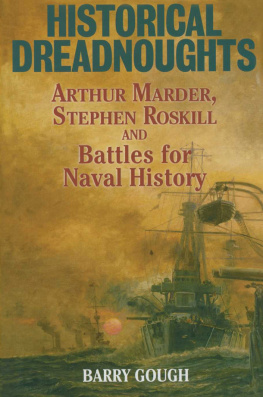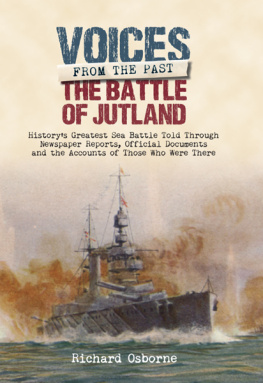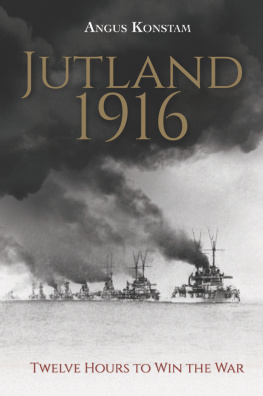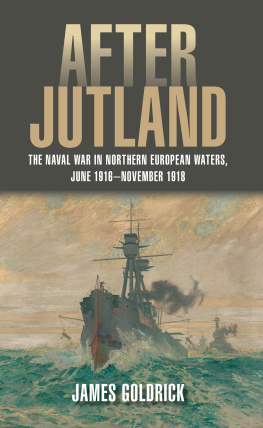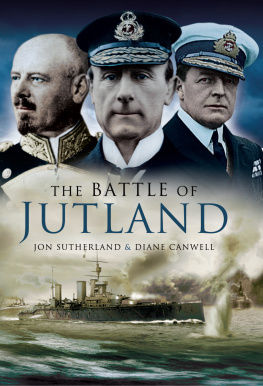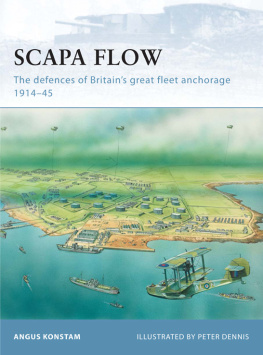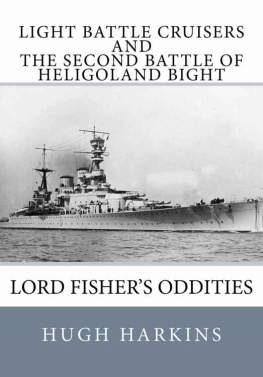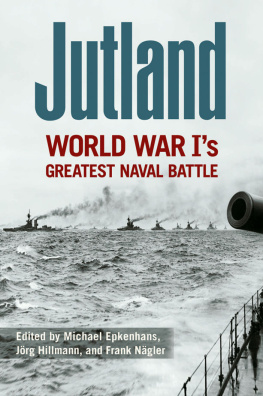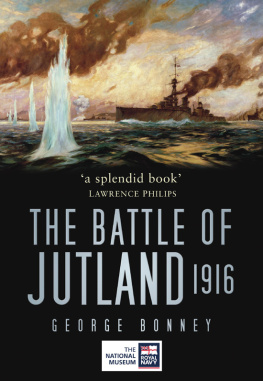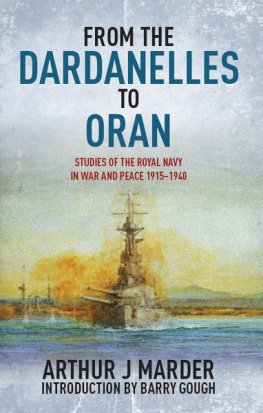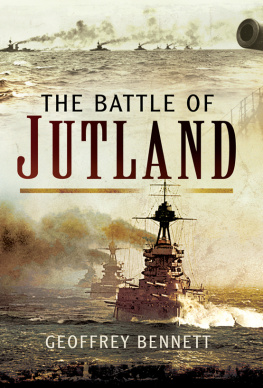ARTHUR J MARDER was a meticulous researcher, teacher and writer who, born in 1910, was to become perhaps the most distinguished historian of the modern Royal Navy. He held a number of teaching posts in American universities and was to receive countless honours, as well as publish some fifteen major works on British naval history. He died in 1980.
BARRY GOUGH, the distinguished Canadian maritime and naval historian, is the author of Historical Dreadnoughts: Arthur Marder, Stephen Roskill and the Battles for Naval History, recently published by Seaforth Publishing.
ADMIRAL SIR JOHN JELLICOE
Commander-in-Chief, Grand Fleet, 191416
[Photograph : Radio Times Hulton Picture Library
FROM THE
DREADNOUGHT
TO
SCAPA FLOW
The Royal Navy in the Fisher Era 19041919
VOLUME III
JUTLAND AND AFTER: MAY TO DECEMBER1916
ARTHUR J MARDER
INTRODUCTION BY BARRY GOUGH
Naval Institute Press
Annapolis
To
the memory of two distinguished Admirals,
upholders of a proud tradition
Lords Jellicoe and Beatty
THE MAPS
Large-scale versions of the maps located at the back can be downloaded from the books page on the publishers websites.
Copyright Arthur J Marder 1978
Introduction copyright Barry Gough 2014
This edition first published in Great Britain in 2014 by
Seaforth Publishing,
Pen & Sword Books Ltd,
47 Church Street,
Barnsley S70 2AS
www.seaforthpublishing.com
Published and distributed in the
United States of America and Canada by the
Naval Institute Press,
291 Wood Road, Annapolis,
Maryland 21402-5034
www.nip.org
British Library Cataloguing in Publication Data
A catalogue record for this book is available from the British Library
Library of Congress Control Number: 2013937405
ISBN 978 1 84832 200 4
All rights reserved. No part of this publication may be reproduced or transmitted in any form or by any means, electronic or mechanical, including photocopying, recording, or any information storage and retrieval system, without prior permission in writing of both the copyright owner and the above publisher.
Printed and bound in Great Britain by CPI Group (UK) Ltd, Croydon, CRO 4YY
Introduction
THIS THIRD VOLUME of Arthur Marders five-volume work From the Dreadnought to Scapa Flow is the central one of the magnum opus and the essential preliminary to two volumes that lead through further agonising episodes in Royal Navy history: the U-boat war of 1917, and the final silent victory of 1918, when under provisions of the Armistice the German High Seas Fleet lay under British guard in the anchorage at Scapa Flow. Many great stories lay ahead for the reader. This third volume, however, will always have its rightful place as one of the great books of British naval history. The reasons for this are many: thoroughness of research, fluency of narrative, and a remarkable degree of analysis count among them. Yet something stands above them all: objectivity and clarity of view and expression. Sober judgements are everywhere apparent.
The Preface makes clear that Marder understood fully that Jutland was the hot topic of British naval history. It would also be a story without end, he knew. The problem, he had learned through correspondence and discussion with participants or those who had studied the matter closely, lay with the differences in the contending admirals and their supporters: on the one hand, Admiral Sir John Jellicoe, who commanded the Grand Fleet, and on the other Vice Admiral Sir David Beatty, who commanded the Battle Cruiser Fleet. Partisans had attempted to draw Marder into their circle. They failed. Montagues and Capulets abound, he writes in his Preface. He never expected that he would be able to change their outlooks or modify their prejudices. But he wanted to tell his side of the story to the interested reading public. This volume contains many other subjects important to the overall story, but it is devoted mainly to the events of the battle of Jutland of 31 May and 1 June 1916 and the immediate aftermath.
Jutland had been a case of missed opportunities on the British side. If the stakes had not been so high it might have been called a comedy of errors. Marder wanted to get at the heart of it for the first time. What he revealed when the first edition appeared in 1966 was an eye opener into a poorly run Admiralty in which communications were from the dreadnought to scapa flow carelessly handled or not at all. Furthermore, at sea, and at the critical time, commanders failed to pass messages. The Kings ships at sea operated largely in a fog of war.
Jellicoe acted on principles that were enshrined in the Grand Fleet Battle Orders. These emphasised the exalted position of the big gun. Those orders, concluded Marder, were open to several weighty general criticisms. The chief of these was the over centralisation of authority that discouraged initiative by subordinate commanders.
The Admiralty had foreknowledge that the High Seas Fleet was about to sortie. Jellicoes armada sailed from Scapa Flow and Cromarty. The intention was to rendezvous with Beattys Battle Cruiser Fleet, from the Firth of Forth, off the entrance to the Skagerrak. When the cruisers of the German fleet were encountered and the battle went through its several phases British captains showed amazing neglect to report what they saw. The Admiralty was guilty of criminal neglect in failing to pass to Jellicoe the vital intelligence, obtained from cryptography, which was in their hands. At the tactical level, Jellicoe had a strong case for turning away in the face of the torpedo threat. With his opposite, Admiral Sheer, steering for home and well covered by destroyers, all Jellicoe could do was use his heavy guns. But he felt well assured that at dawn the enemy would be brought to account. During the night action Jellicoe lay down for a few hours, fully clothed, on a settee in a little shelter on the bridge.
Marder considered all the technical matters the wretchedly inefficient armour-piercing shell, warship design and construction, armour and rates of fire. None of this could be regarded as anything more than a confident discussion of significant details essential to his story. Many another treatise would be written on these topics. What really interested Marder was the human dimension. He wanted to tell his story well, with a liberal infusion of the personal component. He maintained that at bottom history is about people and their interactions little people as well as the decision-makers.
Jutland for the British, as Marder tells it, was a failure of intelligence. The tragedy of the story was that Room 40 of Naval Intelligence, the Admiraltys secret intelligence department, intercepted and deciphered seven signals indicating without question that Sheer was making for Horns Reef and thence back to his Wilhelmshaven base. Operations failed to send any of them to Jellicoe. If any of these signals had been received in the flagship Iron Duke up to 0030 on the morning of the first, Jellicoe would have had time to cut off the High Seas Fleet. Marder imagined that the morning action might have become another Glorious First of June.


